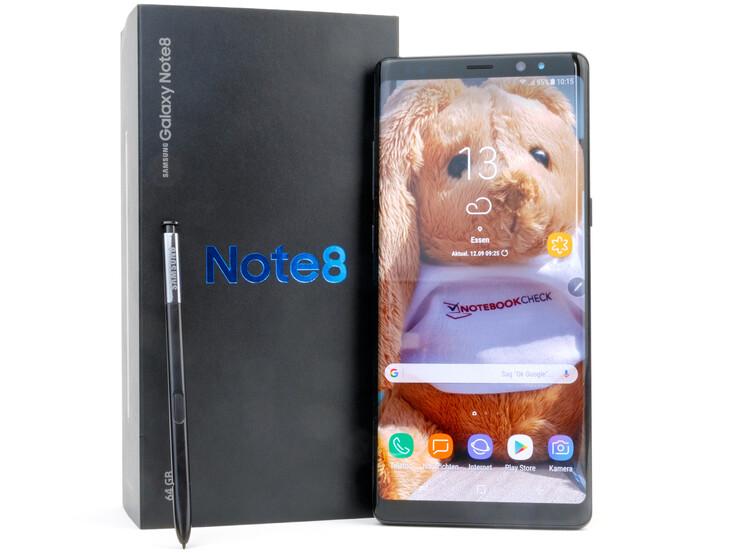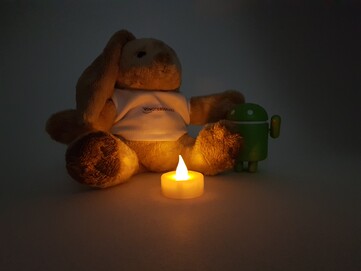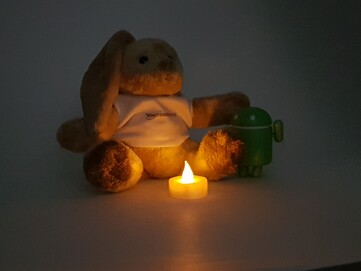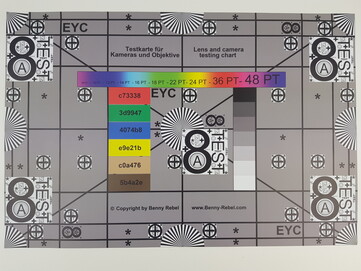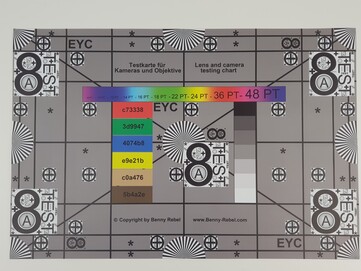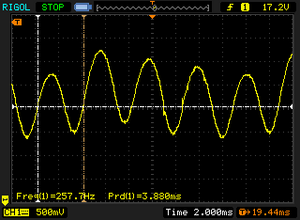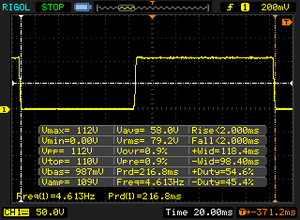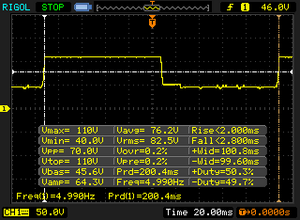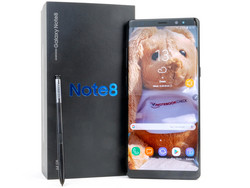Breve Análise do Smartphone Samsung Galaxy Note 8
Os Top 10
» Os Top 10 Portáteis Multimídia
» Os Top 10 Portáteis de Jogos
» Os Top 10 Portáteis Leves para Jogos
» Os Top 10 Portáteis Acessíveis de Escritório/Empresariais
» Os Top 10 Portáteis Premium de Escritório/Empresariais
» Os Top 10 dos Portáteis Workstation
» Os Top 10 Subportáteis
» Os Top 10 Ultrabooks
» Os Top 10 Conversíveis
» Os Top 10 Tablets
» Os Top 10 Smartphones
» A melhores Telas de Portáteis Analisadas Pela Notebookcheck
» Top 10 dos portáteis abaixo dos 500 Euros da Notebookcheck
» Top 10 dos Portáteis abaixo dos 300 Euros
Size Comparison
| |||||||||||||||||||||||||
iluminação: 93 %
iluminação com acumulador: 530 cd/m²
Contraste: ∞:1 (Preto: 0 cd/m²)
ΔE ColorChecker Calman: 2.6 | ∀{0.5-29.43 Ø4.78}
ΔE Greyscale Calman: 2.7 | ∀{0.09-98 Ø5}
Gamma: 2.04
CCT: 6206 K
| Samsung Galaxy Note 8 Super AMOLED, 2960x1440, 6.3" | Samsung Galaxy Note 7 Dual Edge Super AMOLED, 2560x1440, 5.7" | Samsung Galaxy S8 Plus Super AMOLED, 2960x1440, 6.2" | Huawei Mate 9 IPS, 1920x1080, 5.9" | Apple iPhone 7 Plus IPS, 1920x1080, 5.5" | Sony Xperia XZ Premium IPS, 3840x2160, 5.5" | Honor 8 Pro IPS, 2560x1440, 5.7" | |
|---|---|---|---|---|---|---|---|
| Screen | 12% | 20% | -28% | 25% | 0% | -19% | |
| Brightness middle (cd/m²) | 530 | 544 3% | 560 6% | 696 31% | 557 5% | 578 9% | 541 2% |
| Brightness (cd/m²) | 536 | 523 -2% | 562 5% | 680 27% | 553 3% | 568 6% | 514 -4% |
| Brightness Distribution (%) | 93 | 84 -10% | 93 0% | 93 0% | 97 4% | 92 -1% | 91 -2% |
| Black Level * (cd/m²) | 0.42 | 0.35 | 0.62 | 0.3 | |||
| Colorchecker dE 2000 * | 2.6 | 1.9 27% | 1.7 35% | 4.3 -65% | 1.4 46% | 2.8 -8% | 3.2 -23% |
| Colorchecker dE 2000 max. * | 5.1 | 4.2 18% | 3.4 33% | 9.4 -84% | 3.1 39% | 5.1 -0% | 7.2 -41% |
| Greyscale dE 2000 * | 2.7 | 1.8 33% | 1.6 41% | 4.8 -78% | 1.3 52% | 2.8 -4% | 4 -48% |
| Gamma | 2.04 108% | 2.12 104% | 2.13 103% | 2.33 94% | 2.21 100% | 2.15 102% | 2.27 97% |
| CCT | 6206 105% | 6449 101% | 6435 101% | 7255 90% | 6667 97% | 6728 97% | 7120 91% |
| Color Space (Percent of AdobeRGB 1998) (%) | 83.92 | 81.57 | 63.1 | ||||
| Color Space (Percent of sRGB) (%) | 100 | 99.87 | 99.83 | ||||
| Contrast (:1) | 1657 | 1591 | 932 | 1803 |
* ... menor é melhor
Cintilação da tela / PWM (modulação por largura de pulso)
| Tela tremeluzindo/PWM detectado | 257.7 Hz | ||
A luz de fundo da tela pisca em 257.7 Hz (pior caso, por exemplo, utilizando PWM) . A frequência de 257.7 Hz é relativamente alta, portanto, a maioria dos usuários sensíveis ao PWM não deve notar nenhuma oscilação. No entanto, há relatos de que alguns usuários ainda são sensíveis ao PWM em 500 Hz e acima, portanto, esteja atento. [pwm_comparison] Em comparação: 53 % de todos os dispositivos testados não usam PWM para escurecer a tela. Se PWM foi detectado, uma média de 8118 (mínimo: 5 - máximo: 343500) Hz foi medida. | |||
Exibir tempos de resposta
| ↔ Tempo de resposta preto para branco | ||
|---|---|---|
| 4 ms ... ascensão ↗ e queda ↘ combinadas | ↗ 2 ms ascensão | |
| ↘ 2 ms queda | ||
| A tela mostra taxas de resposta muito rápidas em nossos testes e deve ser muito adequada para jogos em ritmo acelerado. Em comparação, todos os dispositivos testados variam de 0.1 (mínimo) a 240 (máximo) ms. » 15 % de todos os dispositivos são melhores. Isso significa que o tempo de resposta medido é melhor que a média de todos os dispositivos testados (20.2 ms). | ||
| ↔ Tempo de resposta 50% cinza a 80% cinza | ||
| 4.8 ms ... ascensão ↗ e queda ↘ combinadas | ↗ 2 ms ascensão | |
| ↘ 2.8 ms queda | ||
| A tela mostra taxas de resposta muito rápidas em nossos testes e deve ser muito adequada para jogos em ritmo acelerado. Em comparação, todos os dispositivos testados variam de 0.165 (mínimo) a 636 (máximo) ms. » 15 % de todos os dispositivos são melhores. Isso significa que o tempo de resposta medido é melhor que a média de todos os dispositivos testados (31.6 ms). | ||
| AnTuTu v6 - Total Score (classificar por valor) | |
| Samsung Galaxy Note 8 | |
| Samsung Galaxy Note 7 | |
| Samsung Galaxy S8 Plus | |
| Huawei Mate 9 | |
| LG V30 | |
| HTC U11 | |
| Honor 8 Pro | |
| HP Elite x3 | |
| Apple iPhone 7 Plus | |
| PCMark for Android | |
| Work performance score (classificar por valor) | |
| Samsung Galaxy Note 8 | |
| Samsung Galaxy Note 7 | |
| Samsung Galaxy S8 Plus | |
| Huawei Mate 9 | |
| LG V30 | |
| HTC U11 | |
| Honor 8 Pro | |
| Work 2.0 performance score (classificar por valor) | |
| Samsung Galaxy Note 8 | |
| Samsung Galaxy S8 Plus | |
| Huawei Mate 9 | |
| LG V30 | |
| HTC U11 | |
| Honor 8 Pro | |
| Geekbench 4.4 | |
| 64 Bit Single-Core Score (classificar por valor) | |
| Samsung Galaxy Note 8 | |
| Samsung Galaxy S8 Plus | |
| Huawei Mate 9 | |
| LG V30 | |
| HTC U11 | |
| Honor 8 Pro | |
| 64 Bit Multi-Core Score (classificar por valor) | |
| Samsung Galaxy Note 8 | |
| Samsung Galaxy S8 Plus | |
| Huawei Mate 9 | |
| LG V30 | |
| HTC U11 | |
| Honor 8 Pro | |
| Compute RenderScript Score (classificar por valor) | |
| Samsung Galaxy Note 8 | |
| Samsung Galaxy S8 Plus | |
| Huawei Mate 9 | |
| LG V30 | |
| HTC U11 | |
| GFXBench 3.0 | |
| on screen Manhattan Onscreen OGL (classificar por valor) | |
| Samsung Galaxy Note 8 | |
| Samsung Galaxy Note 7 | |
| Samsung Galaxy S8 Plus | |
| Huawei Mate 9 | |
| LG V30 | |
| HTC U11 | |
| Honor 8 Pro | |
| Apple iPhone 7 Plus | |
| 1920x1080 1080p Manhattan Offscreen (classificar por valor) | |
| Samsung Galaxy Note 8 | |
| Samsung Galaxy Note 7 | |
| Samsung Galaxy S8 Plus | |
| Huawei Mate 9 | |
| LG V30 | |
| HTC U11 | |
| Honor 8 Pro | |
| Apple iPhone 7 Plus | |
| GFXBench 3.1 | |
| on screen Manhattan ES 3.1 Onscreen (classificar por valor) | |
| Samsung Galaxy Note 8 | |
| Samsung Galaxy Note 7 | |
| Samsung Galaxy S8 Plus | |
| Huawei Mate 9 | |
| LG V30 | |
| HTC U11 | |
| Honor 8 Pro | |
| HP Elite x3 | |
| Apple iPhone 7 Plus | |
| 1920x1080 Manhattan ES 3.1 Offscreen (classificar por valor) | |
| Samsung Galaxy Note 8 | |
| Samsung Galaxy Note 7 | |
| Samsung Galaxy S8 Plus | |
| Huawei Mate 9 | |
| LG V30 | |
| HTC U11 | |
| Honor 8 Pro | |
| HP Elite x3 | |
| Apple iPhone 7 Plus | |
| GFXBench | |
| on screen Car Chase Onscreen (classificar por valor) | |
| Samsung Galaxy Note 8 | |
| Samsung Galaxy Note 7 | |
| Samsung Galaxy S8 Plus | |
| Huawei Mate 9 | |
| LG V30 | |
| HTC U11 | |
| Honor 8 Pro | |
| 1920x1080 Car Chase Offscreen (classificar por valor) | |
| Samsung Galaxy Note 8 | |
| Samsung Galaxy Note 7 | |
| Samsung Galaxy S8 Plus | |
| Huawei Mate 9 | |
| LG V30 | |
| HTC U11 | |
| Honor 8 Pro | |
| Lightmark - 1920x1080 1080p (classificar por valor) | |
| Samsung Galaxy Note 8 | |
| Samsung Galaxy Note 7 | |
| Samsung Galaxy S8 Plus | |
| Huawei Mate 9 | |
| HTC U11 | |
| Basemark ES 3.1 / Metal - offscreen Overall Score (classificar por valor) | |
| Samsung Galaxy Note 8 | |
| Samsung Galaxy Note 7 | |
| Samsung Galaxy S8 Plus | |
| Huawei Mate 9 | |
| HTC U11 | |
| Apple iPhone 7 Plus | |
| Epic Citadel - Ultra High Quality (classificar por valor) | |
| Samsung Galaxy Note 8 | |
| Samsung Galaxy Note 7 | |
| Samsung Galaxy S8 Plus | |
| Huawei Mate 9 | |
| HTC U11 | |
| JetStream 1.1 - Total Score | |
| Apple iPhone 7 Plus (Safari Mobile 10.0) | |
| OnePlus 5 (Chrome 59) | |
| Samsung Galaxy Note 8 (Samsung Browser 6.0) | |
| HTC U11 (Chrome 58) | |
| Huawei Mate 9 (Chrome 54) | |
| Samsung Galaxy S8 Plus (Samsung Browser 5.2) | |
| Sony Xperia XZ Premium (Chrome 59) | |
| Samsung Galaxy Note 7 (Chrome Mobile 44.0.2403.133) | |
| Honor 8 Pro (Chrome Version 57) | |
| HP Elite x3 | |
| Octane V2 - Total Score | |
| Apple iPhone 7 Plus (Safari Mobile 10.0) | |
| Samsung Galaxy S8 Plus (Samsung Browser 5.2) | |
| Samsung Galaxy Note 8 (Samsung Browser 6.0) | |
| Samsung Galaxy Note 7 (Chrome Mobile 44.0.2403.133) | |
| OnePlus 5 (Chrome 59) | |
| Huawei Mate 9 (Chrome 54) | |
| HTC U11 (Chrome 58) | |
| Sony Xperia XZ Premium (Chrome 59) | |
| Honor 8 Pro (Chrome Version 57) | |
| HP Elite x3 (Edge 1.14393) | |
| Mozilla Kraken 1.1 - Total | |
| HP Elite x3 (Edge 1.14393) | |
| Sony Xperia XZ Premium (Chrome 59) | |
| Honor 8 Pro (Chrome Version 57) | |
| HTC U11 (Chrome 58) | |
| Huawei Mate 9 (Chrome 54) | |
| OnePlus 5 (Chrome 59) | |
| Samsung Galaxy Note 7 (Chrome Mobile 44.0.2403.133) | |
| Samsung Galaxy S8 Plus (Samsung Browser 5.2) | |
| Samsung Galaxy Note 8 (Samsung Browser 6.0) | |
| Apple iPhone 7 Plus (Safari Mobile 10.0) | |
| WebXPRT 2015 - Overall | |
| Apple iPhone 7 Plus | |
| Samsung Galaxy Note 7 (Chrome Mobile 44.0.2403.133) | |
| HTC U11 (Chrome 58) | |
| OnePlus 5 (Chrome 59) | |
| Samsung Galaxy Note 8 (Samsung Browser 6.0) | |
| Samsung Galaxy S8 Plus (Samsung Browser 5.2) | |
| Huawei Mate 9 (Chrome 54) | |
| Sony Xperia XZ Premium (Chrome 59) | |
| Honor 8 Pro (Chrome Version 57) | |
| HP Elite x3 (Edge 1.14393) | |
* ... menor é melhor
| Samsung Galaxy Note 8 | Samsung Galaxy Note 7 | Samsung Galaxy S8 Plus | Huawei Mate 9 | HTC U11 | Honor 8 Pro | Sony Xperia XZ Premium | |
|---|---|---|---|---|---|---|---|
| AndroBench 3-5 | -21% | 1% | -32% | 66% | 149% | -22% | |
| Sequential Read 256KB (MB/s) | 797 | 484.6 -39% | 788 -1% | 594 -25% | 717 -10% | 738 -7% | 687 -14% |
| Sequential Write 256KB (MB/s) | 205.9 | 135.2 -34% | 194.2 -6% | 142.9 -31% | 206.4 0% | 187.1 -9% | 194 -6% |
| Random Read 4KB (MB/s) | 122.5 | 82.7 -32% | 127.2 4% | 94.7 -23% | 91.4 -25% | 166.4 36% | 74.1 -40% |
| Random Write 4KB (MB/s) | 14.55 | 14.72 1% | 15.27 5% | 8.77 -40% | 80 450% | 151.6 942% | 17.2 18% |
| Sequential Read 256KB SDCard (MB/s) | 67.9 ? | 72.4 ? 7% | 71.1 ? 5% | 54 ? -20% | 68.8 ? 1% | 54.2 ? -20% | 36.79 ? -46% |
| Sequential Write 256KB SDCard (MB/s) | 59.3 ? | 43.84 ? -26% | 57.2 ? -4% | 29.53 ? -50% | 46.25 ? -22% | 32.16 ? -46% | 33.31 ? -44% |
(+) A temperatura máxima no lado superior é 35.7 °C / 96 F, em comparação com a média de 35.2 °C / 95 F , variando de 21.9 a 247 °C para a classe Smartphone.
(+) A parte inferior aquece até um máximo de 36.4 °C / 98 F, em comparação com a média de 34 °C / 93 F
(+) Em uso inativo, a temperatura média para o lado superior é 30.1 °C / 86 F, em comparação com a média do dispositivo de 32.9 °C / ### class_avg_f### F.
| desligado | |
| Ocioso | |
| Carga |
|
Key:
min: | |
| Samsung Galaxy Note 8 3300 mAh | Samsung Galaxy Note 7 3500 mAh | Samsung Galaxy S8 Plus 3500 mAh | Huawei Mate 9 4000 mAh | Sony Xperia XZ Premium 3230 mAh | HP Elite x3 4150 mAh | Apple iPhone 7 Plus 2915 mAh | |
|---|---|---|---|---|---|---|---|
| Power Consumption | -9% | 9% | -33% | -37% | -37% | -33% | |
| Idle Minimum * (Watt) | 0.73 | 0.72 1% | 0.68 7% | 0.78 -7% | 0.62 15% | 0.86 -18% | 0.77 -5% |
| Idle Average * (Watt) | 1.44 | 1.37 5% | 1.13 22% | 2.13 -48% | 2.44 -69% | 1.46 -1% | 2.04 -42% |
| Idle Maximum * (Watt) | 1.53 | 1.44 6% | 1.16 24% | 2.17 -42% | 2.59 -69% | 1.59 -4% | 2.24 -46% |
| Load Average * (Watt) | 4.56 | 5.56 -22% | 4.69 -3% | 6.32 -39% | 4.94 -8% | 8.1 -78% | 4.69 -3% |
| Load Maximum * (Watt) | 5.09 | 6.78 -33% | 5.24 -3% | 6.49 -28% | 7.91 -55% | 9.35 -84% | 8.66 -70% |
* ... menor é melhor
| Samsung Galaxy Note 8 | Samsung Galaxy Note 7 | Samsung Galaxy S8 Plus | HP Elite x3 | Huawei Mate 9 | Apple iPhone 7 Plus | HTC U11 | OnePlus 5 | |
|---|---|---|---|---|---|---|---|---|
| Duração da bateria | 36% | 30% | 19% | 32% | 26% | -3% | 10% | |
| Reader / Idle (h) | 18.9 | 23.8 26% | 26.1 38% | 36.8 95% | 25.6 35% | 30.6 62% | 20.8 10% | 25.6 35% |
| H.264 (h) | 11 | 16 45% | 12.4 13% | 12.7 15% | 15.8 44% | 13.6 24% | 8.3 -25% | 10.4 -5% |
| WiFi v1.3 (h) | 7.9 | 10.1 28% | 12.3 56% | 7 -11% | 12.6 59% | 9.8 24% | 9.3 18% | 8.6 9% |
| Load (h) | 4.1 | 6 46% | 4.6 12% | 3.1 -24% | 3.7 -10% | 3.8 -7% | 3.5 -15% | 4.1 0% |
| PCMark for Android - Work 2.0 battery life | |
| Huawei Mate 9 | |
| Samsung Galaxy J7 2017 | |
| Samsung Galaxy S8 Plus | |
| Samsung Galaxy Note 8 | |
| HTC U11 | |
A Samsung lançou novamente um excelente produto com o Galaxy Note 8 e não há nenhum phablet alternativo real para os fanáticos da S Pen. O aparelho vem com uma excelente configuração. No entanto, o fabricante poderia ter sido um pouco mais generoso com o armazenamento interno em vista do preço.
A tela, o desempenho e a câmera são de primeira classe. As medidas de segurança são a única explicação para a bateria menor quando se olha para os primeiros resultados do teste. Os tempos de duração permanecem por trás das expectativas. No entanto, a maioria dos usuários deve passar um dia com facilidade. O peso adicional do Note 8 nos confunde aqui.
O Galaxy Note 8 da Samsung está a partir de 999 Euros (~$950). Uma estação docking DeX é adicionada gratuitamente quando pré-encomendado. O aparelho provavelmente receberá uma classificação muito boa, apesar da duração da bateria mais fraca e da tela não idealmente configurada. No entanto, ainda é incerto se é suficiente para ganhar um lugar no pódio.




